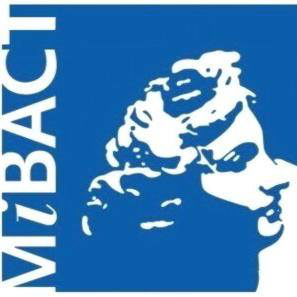Summary (English)
During the 2013 Field School of the Portus Project excavations were undertaken in Building 5 – “navalia”, and Buildings 8 and 3, which are part of the “Imperial Palace”.
Building 5 (ca. 240 × 60 m), divided into large aisles 12 or 18 m wide separated into by corridors, was built during Trajan’s reign, when it was probably used for the construction and/or maintenance of trading ships or warships. It underwent substantial transformations at the end of the 2nd century A.D. when many of the aisles were divided, and in the late antique period when it was incorporated within the city walls and lastly occupied by burials. A new trench was opened in the large aisle investigated in 2011-2012, where the 3rd century A.D. make up, on top of which the remains of 4th-5th century A.D. suspensurae were preserved, was removed. This exposed the first 2nd century A.D. levels connected with the subdivision of the aisles and then the Trajanic floor levels constituted by make-ups and sand deposits, with deep abrasions and numerous postholes.
The Imperial Palace complex extends over an area of ca. 3 hectares on a peninsula at the centre of the port, situated between Trajan’s hexagonal basin and the earlier basin built at the time of Claudius. From 2012 onwards, excavations have been in progress in the north-eastern corner of the complex (Building 8) and are co-ordinated with restoration work directed by Dr. Angelo Pellegrino (SSBAR). Only the ground floor and a part of the first floor of the complex, which was originally on three levels, are preserved. Built during the reign of Trajan, it was occupied for a long period and underwent many structural alterations. Several first floor rooms have been investigated. Among these a latrine with the remains of the original Trajanic black and white mosaic floor, cut by the insertion of a new marble floor when the latrine bench was renewed and a new door opened in the 4th-5th century A.D. All of the marble was robbed out, presumably at the end of the 5th century A.D. Another room on the first floor, trapezoidal in plan and as yet of unknown function, was enriched with a showy marble floor and wall decoration. The make-ups, using long fragments of African amphorae, are preserved. Part of the portico and the open area of a peristyle were investigated, revealing two brick columns still faced with white stucco and the collapse in situ of a corner pillar, lying on the deposits obliterating the structures. A mosaic floor was partially exposed in the portico, of which the border formed by a polychrome plait was preserved. In the open part of the peristyle the remains of a floor of marble slabs was exposed, in phase with the cistern below it. In a corridor that was originally open, the abandonment layers dating from the 6th century A.D. onwards were investigated.
Building 3 is a rectangular structure delimited by walls in opus testaceum and opus mixtum, arranged around a central peristyle with vaulted portico and opus spicatum floors. It underwent many transformations and in the 3rd century A.D. housed a glass making workshop.
The cleaning of the rubble deposits revealed the presence of numerous interior walls relating to the roofing of the corridors, of great interest for the reconstruction of the building’s walls. In a point where no interior walls were present, a trench was opened in order to investigate the accumulations of material overlying the floor.
- Simon Keay - University of Southampton
- Roberta Cascino - The British School at Rome
- Graeme Earl - University of Southampton
- Fabrizio Felici - Cooperativa Archeologica Parsifal
Director
Team
- Alice James – The British School at Rome
- Andrea Zocchi
- Elizabeth Richley - The British School at Rome
- Fabiana Battistin
- Hembo Pagi - University of Southampton
- James Miles
- Kristian Strutt - Archaeological Prospection Services of Southampton
- Marco Conti
- Matthew Berry - The British School at Rome
- Peter Wheeler - University of Southampton
- Camilla Panzieri - The British School at Rome
- Dragana Mladenovic - University of Oxford
- Penny Copeland - University of Southampton
- Sabrina Zampini
- Stephen Kay – The British School at Rome
Research Body
- Soprintendenza Speciale per i Beni Archeologici di Roma
- The British School at Rome
- University of Southampton
Funding Body
Images
- No files have been added yet




